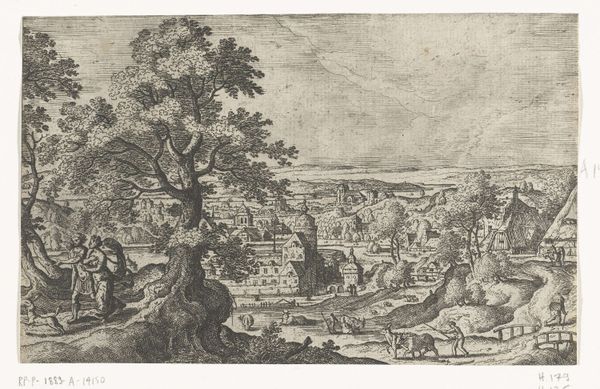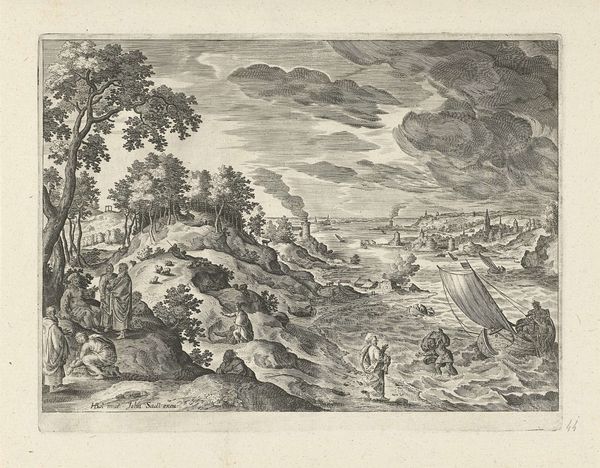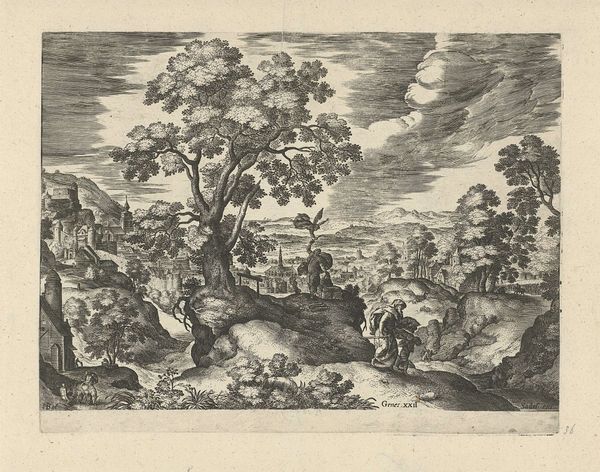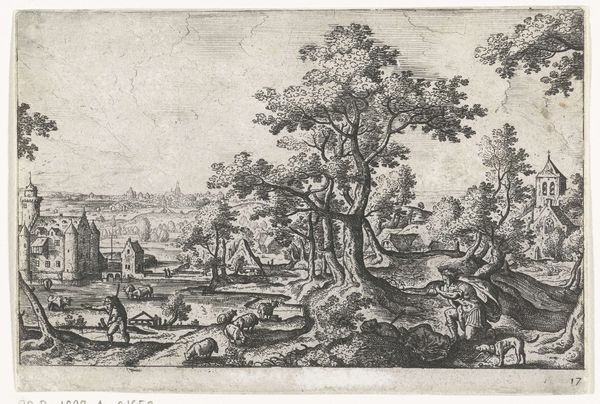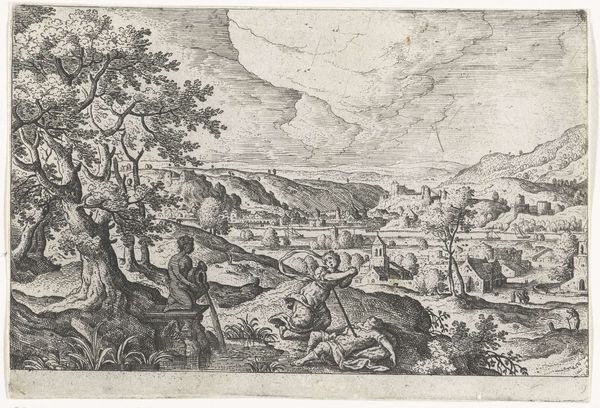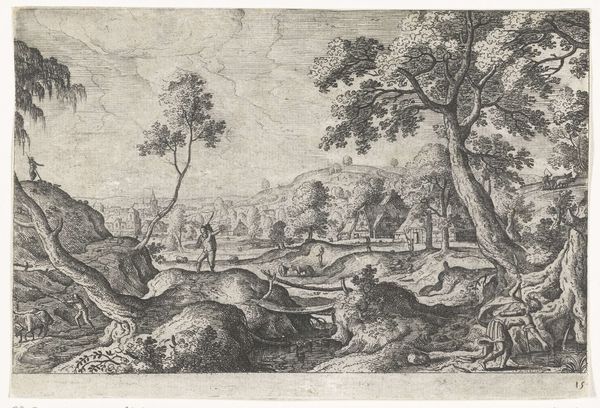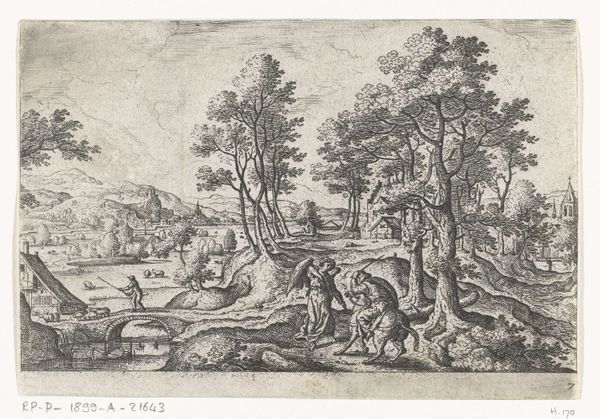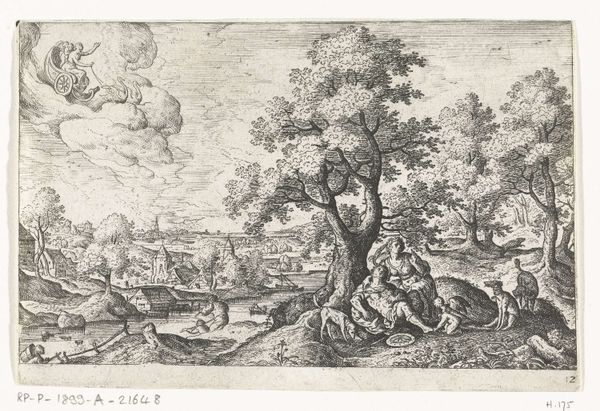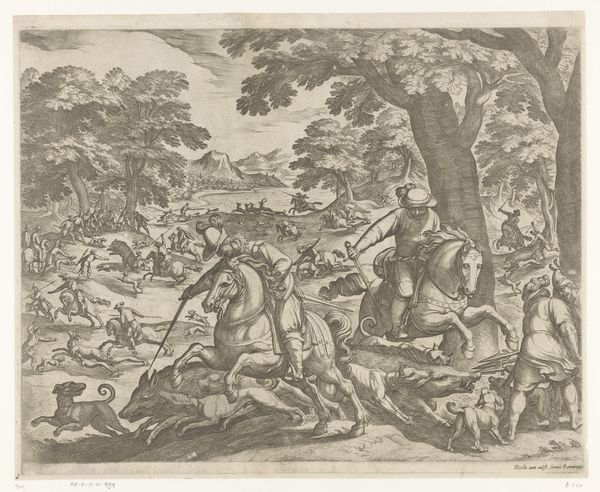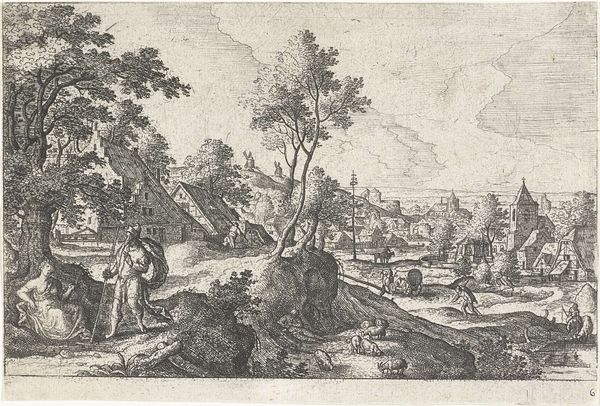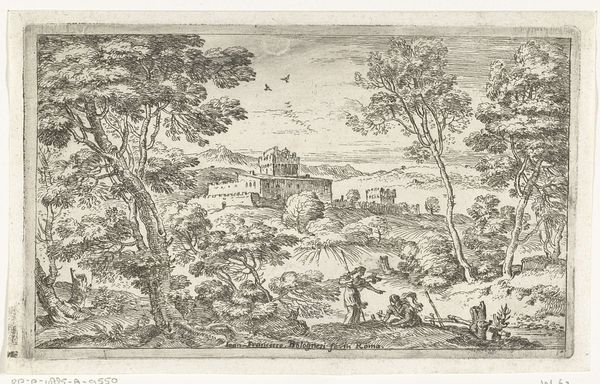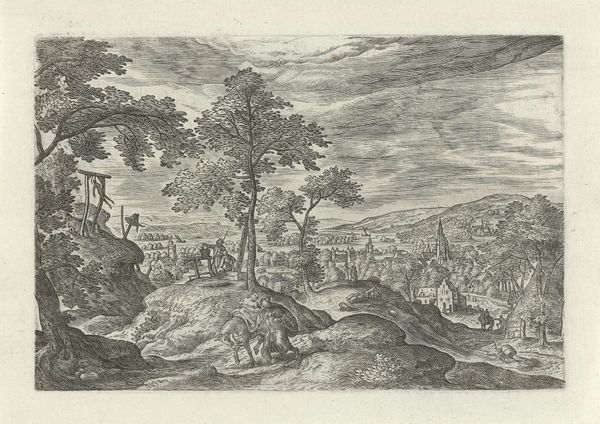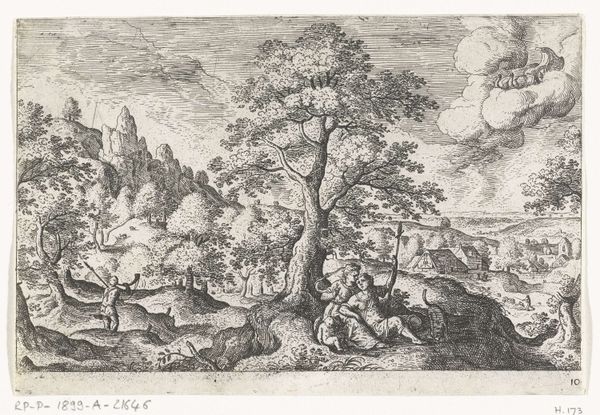
etching
#
etching
#
landscape
#
mannerism
#
history-painting
#
northern-renaissance
Dimensions: height 205 mm, width 267 mm
Copyright: Rijks Museum: Open Domain
Curator: Let’s take a closer look at this etching, "Landscape with the Repose on the Flight into Egypt", likely created between 1580 and 1600, by Johann Sadeler I. Editor: My first impression is how the densely worked foreground contrasts with the more open, distant landscape. There’s almost a claustrophobic feeling initially, despite the expansive vista beyond. Curator: Precisely! Sadeler was a master printmaker. Note how the dense cross-hatching defines texture and depth, particularly in the trees and the foreground figures. This speaks to a labor-intensive process where the quality of the line dictated everything. Editor: Absolutely. And placing the biblical narrative of the Holy Family resting in this distinctly Northern European, village scene anchors the story in a relatable, accessible setting. It also raises questions about cultural appropriation and the construction of religious narratives. Who does the 'flight' resonate with most powerfully, historically and now? Curator: Good point. The scene’s visual elements certainly reflected the lives and environment of its intended audience. But focusing on the 'making' reveals Sadeler’s superb skill. The contrast between light and shadow, the intricate details rendered through carefully applied lines—the entire construction is an admirable accomplishment for its time. Editor: I agree the etching technique itself demonstrates remarkable skill. But let’s not divorce that skill from the socio-political backdrop of 16th-century Europe, especially given the story. Consider religious persecution, migration, and displacement—the artwork might inadvertently comment on themes relevant even now. The family flees into *Egypt*; even then, seeking refuge and encountering the “other”. Curator: I appreciate you highlighting the complex intersections, but I am particularly struck by how an etcher—who may have never stepped into a similar forest himself—brought such meticulousness to detailing it using acid and metal plates. The labor! Editor: True, acknowledging the physical labor that goes into creating the artwork reveals aspects we miss at first sight. Still, that labor exists alongside the narrative choices, whether deliberate or otherwise, revealing our contemporary human connections to the Holy family. Curator: Thanks. It is rewarding to remember both the human action that produced the art as well as our own position in relating to the subjects. Editor: Indeed.
Comments
No comments
Be the first to comment and join the conversation on the ultimate creative platform.
